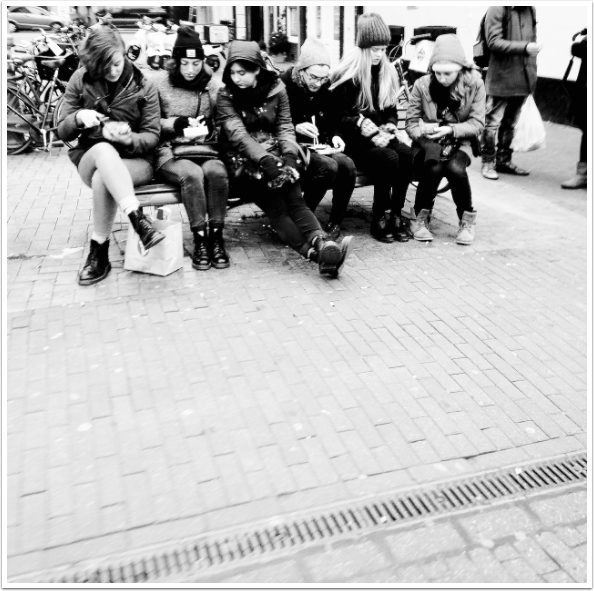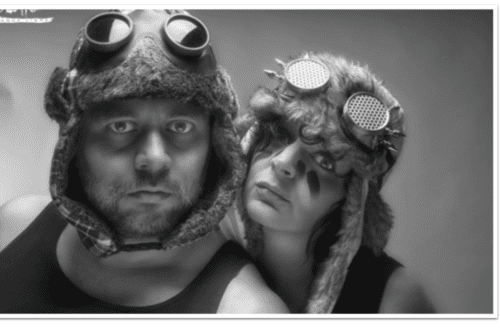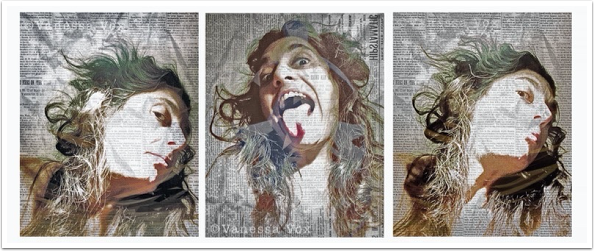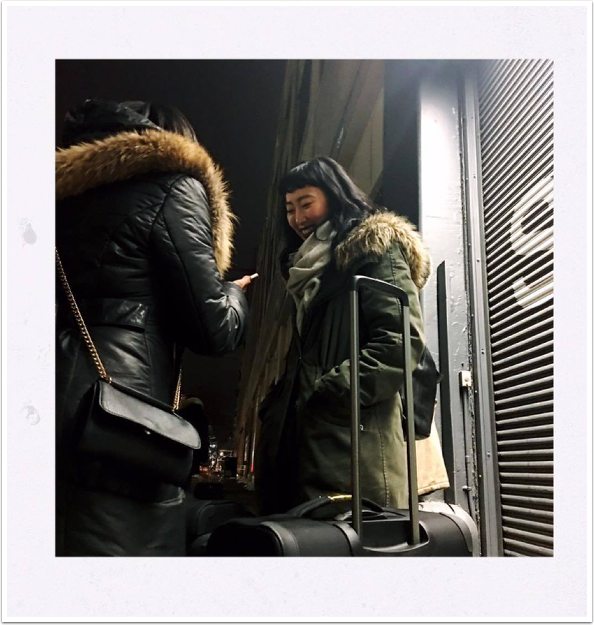Streets Ahead Interview – Cindy Buske – Mobile Street Photography
This week, the Women’s Street Photography Collective (Streets Ahead) is pleased and honoured to feature Cindy Buske in our interview segment.
“As a mobile photographer, I love capturing the world around me – literally anything that draws my attention can become a subject. I also have a more figurative side that cherishes the work of creating unique portraiture. My images often enter a dreamy, ethereal world, yet maintain an accessible simplicity.”
Cindy is is a Seattle-based nurse who is passionate about photography. For her, photography is an important creative outlet and counterbalance to the structured world of medicine. Her images have been featured in Snap and Mobiography Magazines, as well as on Hipstography, and in various group exhibitions. I highly recommend a visit to her galleries.
Flickr: https://www.flickr.com/photos/cindybuske/
Lensculture: https://www.lensculture.com/cindy-buske
National Geographic Your Shot: http://yourshot.nationalgeographic.com/profile/727396/
‘Cindy Buske’ – ©Cindy Buske
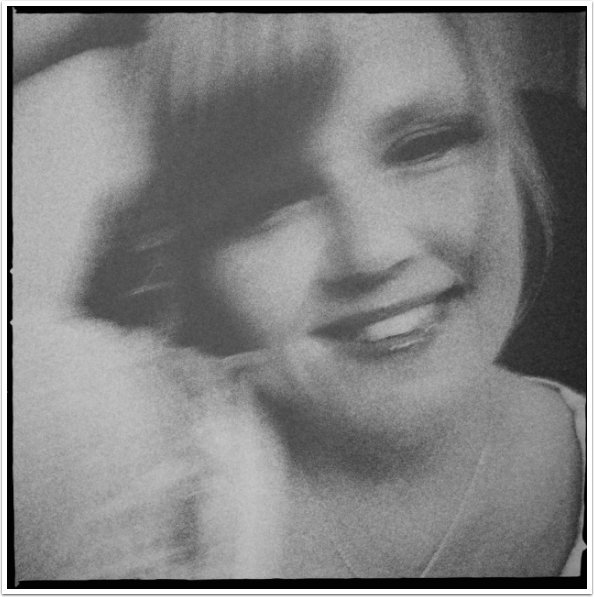
Please tell us a little bit about yourself and what you do. Have you always been interested in photography?
I have been interested in photography as long as I can remember. When I was a child, it was mostly a fascination with cameras and what they could do. Over time, I developed an interest in portraiture, but not in the traditional sense I’ve always been drawn to, and strive to create, unusual images of people. As a mobile photographer, I’ve developed interest in a wide range of photography styles. I currently work as a nurse-manager in an ambulatory care environment where I interact with many personalities all day. This role is quite different than the other side of my personality that enjoys being on the sidelines, observing and learning from people the side where the photographer and artist in me come out.
‘Faith in Motion’ – ©Cindy Buske
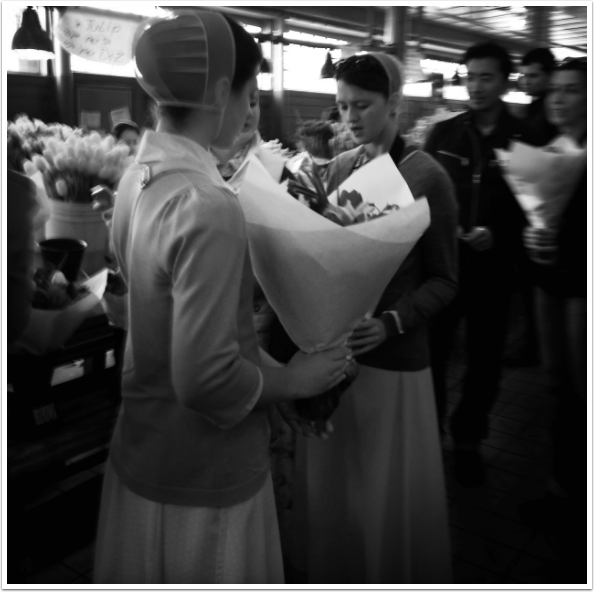
Where do you currently live? Is this a place that gives you energy and inspiration for your street photography or do you have to travel to find it?
I currently live just outside of Seattle. The city definitely provides great energy for me as a photographer. Seattle is diverse, full of character, easy to walk, and visually unique. Some of that is changing as Seattle grows much of the funkiness that made the area stand out is now being washed away in favor of generic and corporate influences a sad fade of the local vibe I grew up in. It’s tough to see, but apparently inevitable. I do travel often, though not solely in search of new venues for photography. I travel because I love seeing and experiencing other places photographing them is a way to hold the memories for myself and to share with others. I travel abroad when I can, but also have favorite destinations closer to home. New Orleans, San Francisco and Portland are three cities I’ve visited several times each filled with great street photography opportunities. Vancouver, BC is another frequented destination as the Canadian border is just north of where I live and it’s a beautiful, bustling international city.
‘Merchants Cafe’ – ©Cindy Buske
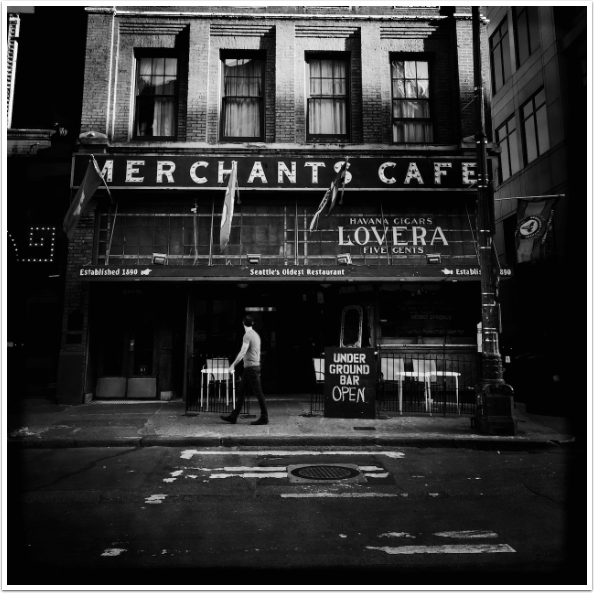
Does your location, be it a big city, a small town, or the countryside, heavily inform all your photographs in general, not just your street photographs? How do you choose the places that you go to photograph?
I would say my location heavily influences only my street photographs. The city is close and I know it well. I seek out various locations for different types of photo projects though, sometimes venturing far away from home.
‘Cafe Paris, Hamburg’ – ©Cindy Buske
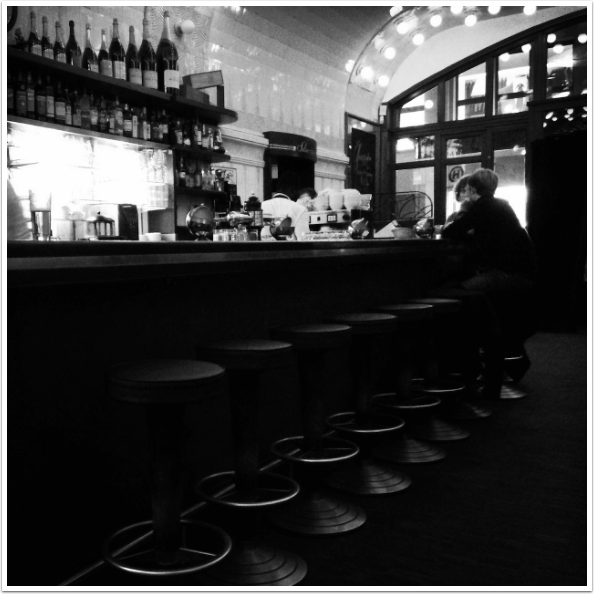
What first drew you to street photography and how did you discover it? What is it about street photography that compels you go out to shoot on the street? What are the subjects that are of the greatest interest to you?
My interest in street photography is fairly new, highly influenced by the mobile art community I’ve enjoyed being a part of since discovering Hipstamatic and related online platforms for photo sharing. I admire the work of many who share in the fascination of mobile photography and art as a movement. Too many to name here, but wow, what a discovery it’s been! Because the practice of street photography is still new to me, I feel I haven’t had enough time yet to develop distinct subjects that draw my eye, though I would say that I’m naturally drawn to the softer side of humanity people interacting with one another or their environment in positive ways; moments where I experience a certain sense of empathy and understanding.
‘Coffee and Doughnuts’ – ©Cindy Buske
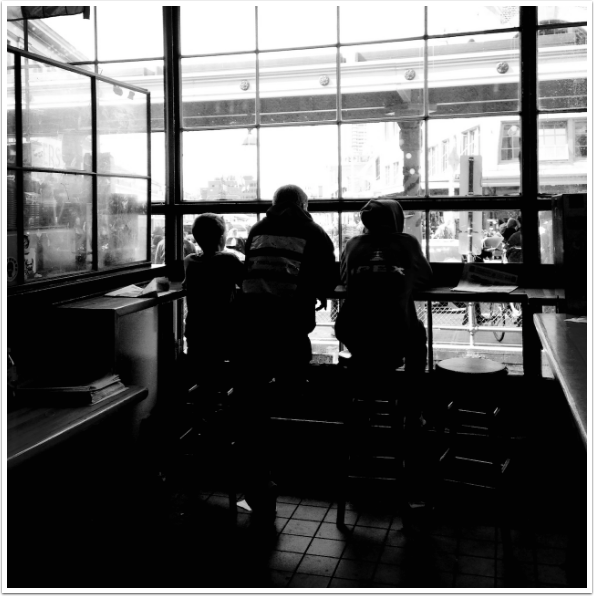
Do you sometimes secretly pose or direct the subjects in your shots or do you always shoot spontaneously? Do you think there is a “right” way to take a street photograph? There are those who feel that a photograph is only good if it follows certain guidelines and fundamentals such as “the decisive moment” or that street photography should never be posed. How do you feel about this?
I’ve heard and read quite a bit of discussion surrounding these topics. I don’t secretly pose subjects, but have occasionally watched people and waited for the right moment. Usually the capture is spontaneous it helps to always have my camera open and ready because you just never know! I want to capture that moment where I can see and feel humanity unfolding in front of me. I do not feel there is a “right” way to take a street photograph. I’ve found the dialogue around this topic can get pretty lofty and quite frankly, a bit alienating. If I like the image, then it’s good and “right”. If others like it, even better the photograph then becomes shared magic of a very brief moment in time. Following stringent guidelines seems constrictive in the world of street photography. Some may be more comfortable having a set of rules, and that’s fine. Whatever helps you create images you like and want to share do that. One example of a street photography “rule” that I question: some say one should avoid taking photos of buskers and street performers, but I think this is a bit absurd. They are there, and sometimes want to be captured by your lens they’re part of the street vibe, particularly where I often shoot in Seattle’s Pike Place Market corridor. Ask when possible and let them do their thing, and of course recognize they’ve chosen to share their talent this way for money. I do think it’s important, at least for me, to avoid subjects who are in a state where it’s likely they wouldn’t want to be photographed the homeless, inebriated or outwardly mentally ill.
‘Europa’ – ©Cindy Buske

How do you feel about shooting from the hip as opposed to looking though the viewfinder?
Either works! I just like taking pictures sometimes I’m quite calculated about it, other times I simply shoot away hoping to capture something wonderful. Those in the latter category are often ones that strike me later when going through a group of images the shots I didn’t even realize I had actually captured, even if I was aware of the moment.
‘Cafe Amsterdam’ – ©Cindy Buske
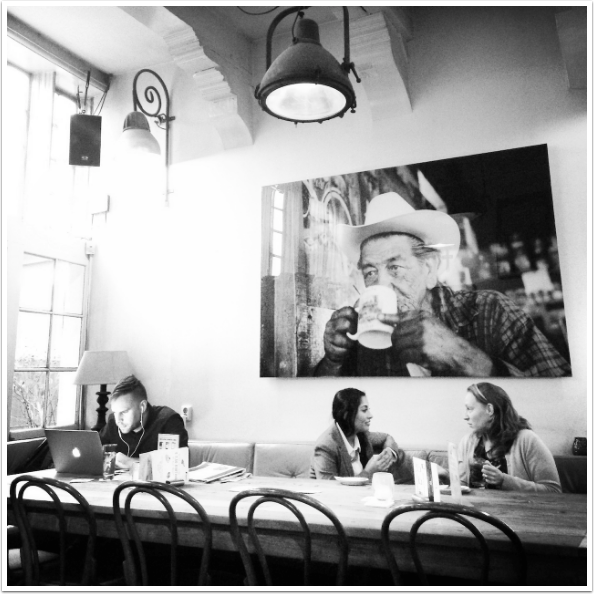
These days, the genre raises many questions with regards to the morals and ethics of taking photographs of strangers in a public environment. It is becoming increasingly difficult to shoot freely as a street photographer. What are your thoughts on this?
This is a fair question, but one that is dependent on so many factors. If you are in a public space, and the location allows for photographing in public (always worth checking into as countries vary), then it should be fine. But that’s only the legal side. The moral and ethical questions are separate, and require far more thought and personal insight. Compassion matters. For me, this means considering how I would feel about having a photo captured of myself or my family in a similar situation. Not a rule, but a personal gauge. Some scenes or situations I’ve had to ponder before deciding whether or not to attempt a capture, and the same can be said about sharing of certain images after I’ve already taken them. It all depends, and it’s hard to define exactly what will sway me in either direction. I try not to be invasive.
‘Kilted Groom’ – ©Cindy Buske
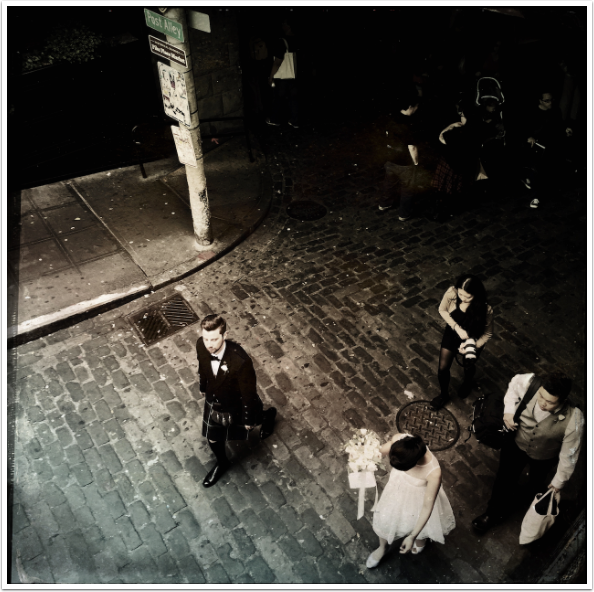
How do you feel about using model release forms and re-publication of images of the public? Are we morally, if not legally responsible?
For street photography, no. It would be virtually impossible to obtain consent from each person you photograph in public. If the image is staged in any way, I believe a model release is appropriate and prudent, and also respectful of the model. I do quite a bit of staged art photography with models and have their written consent. These documents are needed for certain types of sharing or selling of imagery.
‘Portland Beat’ – ©Cindy Buske
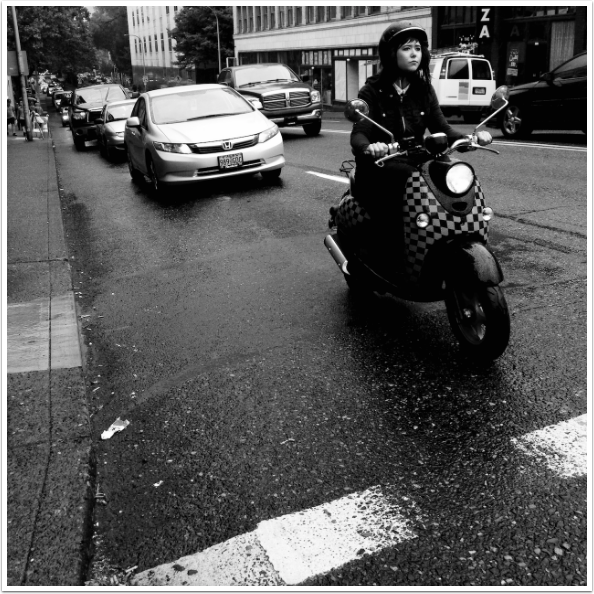
Do you have any personal rules when it comes to street photography? For instance, are there any situations that you feel are morally unacceptable?
As previously mentioned, it really comes down to how I would feel about being publicly photographed in the same moment. If the idea feels positive, then it’s a go. If it makes me feel exceptionally sad, uncomfortable, poorly represented, or just inappropriate, I avoid photographing the scene. However, I’ve come across many photographs I appreciate taken by others that are gritty, unbecoming, bizarre or unsettling. Some street photographers thrive on this kind of work and it works for them, it’s just not my style. Everyone has a different message to convey. People also have several sides and nuances to their personalities, so it’s worth exploring a variety of human states and interactions. For me, being somewhat of the perpetual optimist, looking for the positive in others is valuable I feel best in that realm and tend to follow it with my photography. That doesn’t necessarily mean cutesy or sappy, but showing some hope in the human condition.
‘Amsterdam Holiday’ – ©Cindy Buske
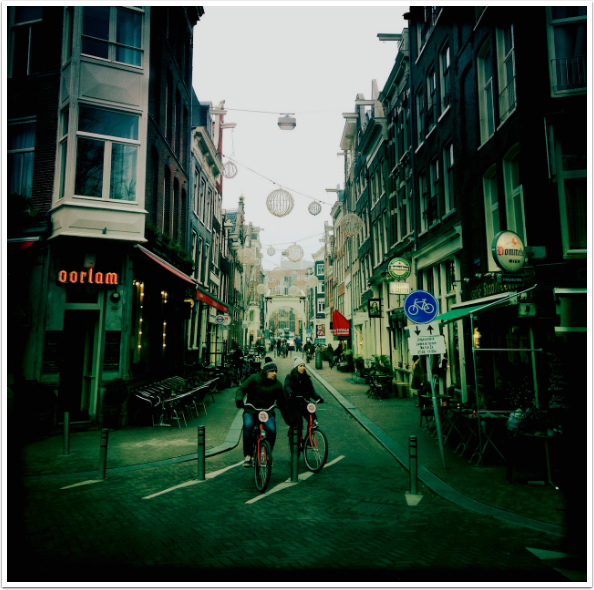
Do you think women street photographers share a different perspective to men? If so, can you elaborate on your thoughts?
That’s a tough one! Maybe. As noted above, everyone shoots based on their own perspective. I believe it is more about the individual than their gender specifically. I also think it varies based on where someone is in their own life. The images you capture when you’re younger may be different than those you create after you’ve matured and experienced more of the world. When you’re stressed or depressed, perhaps you see similar emotions more easily in those around you. Good times in your own life could lead you to gravitate toward happiness in others. Or maybe opposites attract in this way certainly worth exploring.
‘Seeing Seattle’ – ©Cindy Buske – ‘Taken in Seattle’s Pioneer Square. Shot with Oggl. I opted for the Burke lens and Shilshole film as this combo is dedicated to my city. The soft gray tones fit perfectly with the vibe of this couple who appeared to be tourists planning out their adventure‘
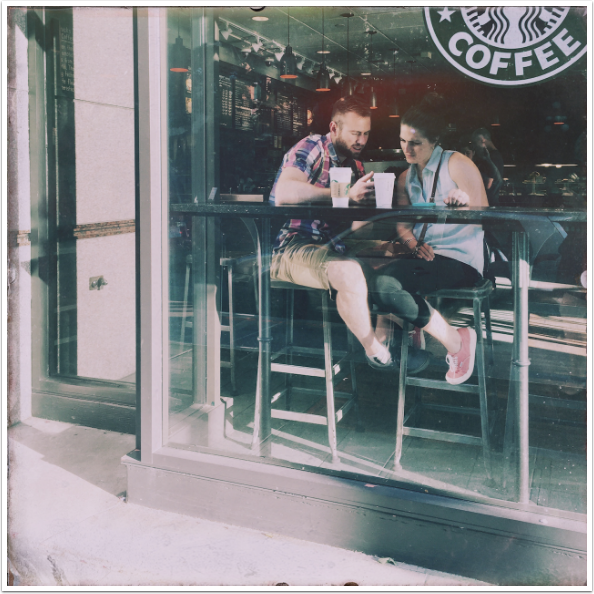
As a woman street photographer, do you find yourself drawn to shooting other women and children or do you prefer to shoot men or is this irrelevant? Would you feel uncomfortable if a male street photographer were to take a photograph of you?
I don’t find myself drawn to one more than the other. I am often drawn toward images that involve more than one person, however. I love human interaction, a feeling of connection, shared spontaneous emotion captured in a fleeting instant. Although one of my favorite street images is of a solo gentleman, holding and tuning his string instrument shortly before playing yes, I broke the “rule”, a busker! He was beautiful and I could see love and reverence in his actions. I don’t think I would feel uncomfortable if a male street photographer captured an image of me I’m out there shooting and figure I’m fair game. I suppose women in general experience unwanted attention more often than men in public a man standing back and simply taking a photo is fairly tame compared to other interactions I’ve had or witnessed.
‘Maestro’ – ©Cindy Buske
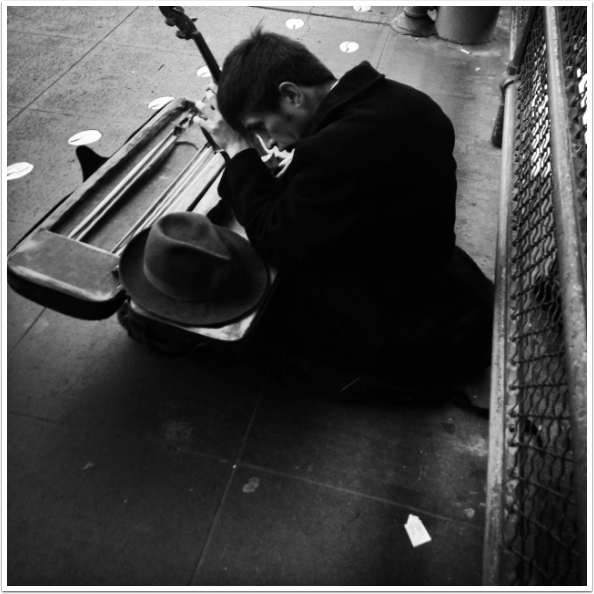
Do you think women street photographers are more accepted by the public when taking photographs or do you think they are more likely to be challenged? Do you have any experience of this?
I’ve definitely had people notice me; in particular, in and around the Pike Place Market. It’s a high traffic area for people on foot, so almost a given that you’ll be noticed at some point. Sometimes I’ll even approach people and ask to capture them it just depends on the vibe and my mood (but I still try to keep it natural for the environment they are being photographed in). I’ve never had anyone become visibly upset with me. It’s hard to say whether women street photographers are more accepted, but that could be the case. It probably depends on who you ask. Though interestingly, I recently read an article covering the top 20 most influential contemporary street photographers only one was a woman! Ladies, we need more representation!
‘Cafe Paris’ – ©Cindy Buske – ‘Captured in a small cafe along the Seine in Paris, I spotted this gentlemen by himself, quietly contemplating and gazing out the window. The mood of this image is best portrayed in a higher contrast black and white, as I wanted to highlight his facial expression and hand while allowing shadows to cover most of his body. Shot with Oggl’
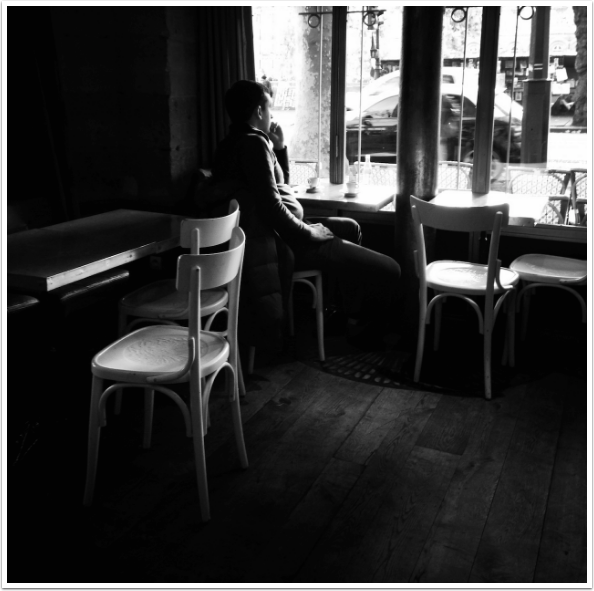
Which street photographers have influenced you?
Since I’m pretty new at this, I haven’t really had the chance to extensively study the work of noted street photographers. Though I did take in and enjoy the opportunity to see the Vivian Maier exhibit while visiting Amsterdam last winter. I’ve been quite absorbed in the world of mobile street photography and the wonderful sharing that happens there. I like to keep my eyes open all the time, and tend to avoid settling in on one person’s style or work.
‘Food Shark Marfa’ – ©Cindy Buske – ‘At a music festival in Marfa, Texas where people come from all over to camp for three days at El Cosmico a funky community with teepees, yurts, shops in Airstreams, open-air bars and food trucks surrounding the venue. The place is so vibrant and full of color, I had to go with the rich tones of Hipstamatic’s John S lens to capture it.Shot with Oggl’
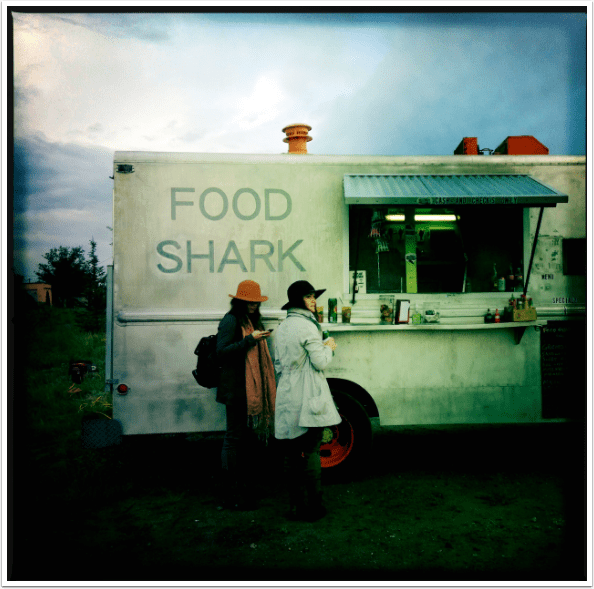
Which mobile device do you use to take your photographs? Do you post-process your photographs? If so, what are your favorite post-processing techniques/apps? If you post-process on your mobile device, do you usually transfer the images as soon as they have been processed to social sites (in other words, capturing and editing the image while in situ) or do you prefer to have more time to work on your images?
I use my iPhone for mobile street photography. I do have a small Sony and a bigger Nikon, though neither gets much use. I also have a few older plastic cameras I still shoot with occasionally love my Holga in particular! I shoot in Hipstamatic quite often, though sometimes will branch out to other apps. I like Polamatic because I love the look and feel of old Polaroids. I’m learning to use the VSCO app for more straightforward, minimally-edited images. With street photography, I tend to go for black and white, rarely processing beyond Hipstamatic lenses and films, but occasionally will use color selectively or add a few finishing touches with other apps. I like Mextures and Camera+ for post-editing. Some images I have to think about for a while, but usually will find a couple of shots in a day’s worth of shooting that I feel are worth sharing right away.
‘Three’ – ©Cindy Buske – ‘To add a soft, ethereal vibe to this image, I used Hipstamatic/Oggl’s Tinto lens which gives a glowing blur to everything in the frame except one small area of focus, in this case the three people standing in the street. Seattle’s Post Alley passageways create beautiful light with old brick roads, neon signs and daylight tunnels.Shot with Oggl’
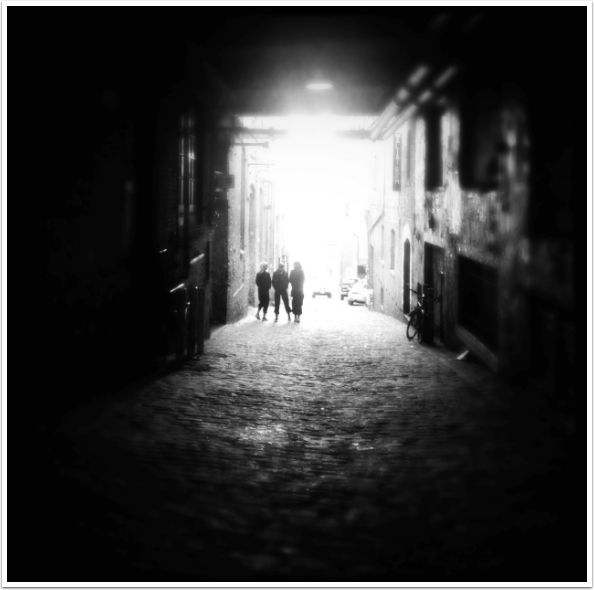
Do you pre-mediate the capture of your images? Do you have a plan or structure in place or do you prefer to act spontaneously? Please share your thoughts about some of your images what you were thinking, or felt when you shot those photographs.
When it comes to street photography, and much of mobile photography, the beauty is in the spontaneity. The flow is fairly fast and the resulting images are a product of the environment I’m working in. Occasionally, I will attend specific public events in the hopes of capturing a certain experience or type of image, but it doesn’t always go as planned and I’m alright with that. I tend to be spontaneous about street photography, capturing what happens to be going on around me, though I often concentrate in certain areas where I’m likely to find good human interaction.
‘The Selfie’ – ©Cindy Buske – ‘This image was also captured in Seattle’s Post Alley. A smiling tourist taking a selfie at the Gum Wall beneath Pike Place Market. I had just happened to turn around to walk back up when I noticed her, and luckily had my camera ready!’
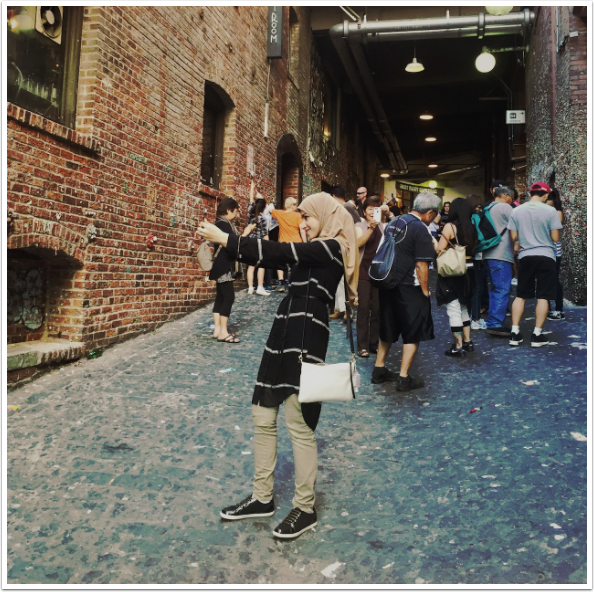
What is the importance of street photography within the entire body of your work? To what extent is street photography a major focus for you?
Street photography is a part of what I do, but my interests are broad. I love photographing people and have done various types of portraiture for years. Adding the element of capturing people in everyday activities seemed like a natural transition once the mobile camera became more prevalent. Much of my photography work is staged, other-worldly portraiture created with models (often my daughter, who shares my sense of the ethereal and slightly spooky scene) a realm quite in contrast to street and other mobile photography. This work sometimes takes weeks of planning as everything we create is completed prior to shooting, rather than digitally manipulated or added after the fact. I love working between contrasting styles of photography it encourages variation in the creative process and keeps the mind flow going.
‘Curbside Kiss’ – ©Cindy Buske – ‘A completely spontaneous kiss about to occur between a couple sitting on the curb outside the original Starbucks in Seattle. Right place, right time I was just walking by’
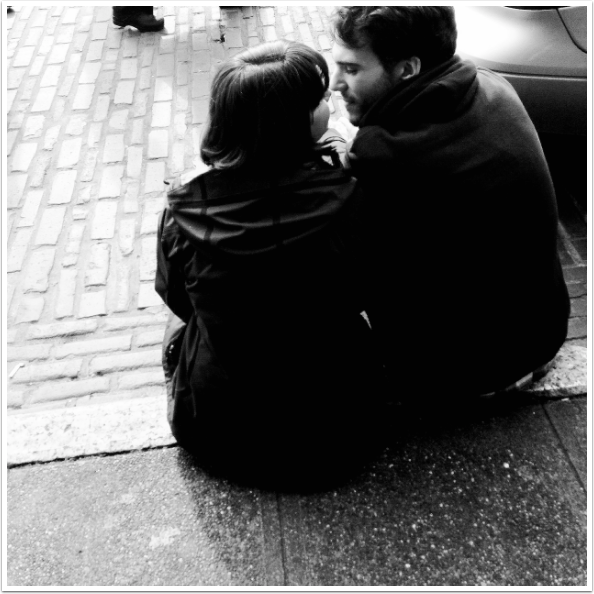
Who do you think is the audience for your work? Is this who you want your audience to be? What is it you hope to achieve, either on a personal or professional level, with your body of work?
My audience is largely the mobile photography community. I’m happy with this audience and find it to also be an endless source of inspiration. I would love to show my work more broadly, but haven’t focused on that concept extensively. For me, photography is a positive balance to my daily work in the clinical environment. I like it that way, at least for now. Who knows what the future holds.
‘The Fieldtrip’ – ©Cindy Buske – ‘What appeared to be a class field trip within New Orleans’ French Quarter, I spotted this straight line of kids in uniform walking to their destination with their teacher behind them. They were all chatting and being silly’
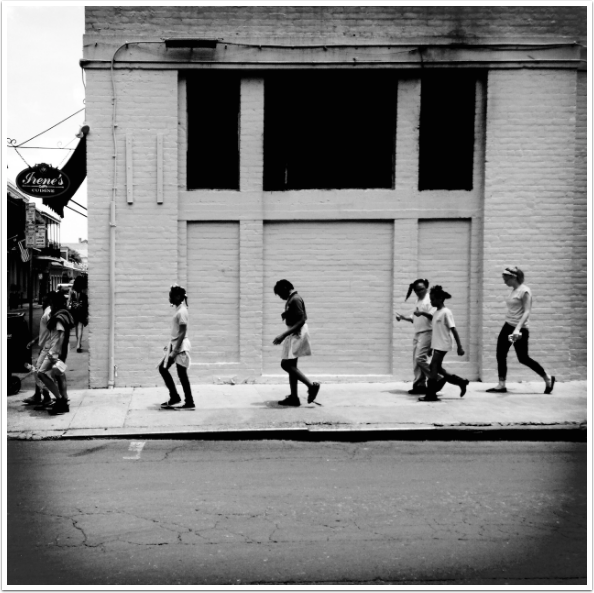
What do you think distinguishes your street photography from others in the group?
This is a hard question because I feel my strength and style in street photography is still forming which actually makes it exciting for me! As discussed earlier, I do like the capture of positive energy between two or more people images that leave me (and hopefully others) feeling a bit more faith in humanity. We need more of that in our world.
‘Big Sister’ – ©Cindy Buske – ‘A stop in North Bend, WA on our way to the mountains. We decided to have lunch at Twede’s Cafe, famous for being Agent Cooper’s favorite spot for a good cup of coffee and slice of cherry pie in the series ‘Twin Peaks’. This young child and big sister were dancing and playing just outside their booth. I loved the happy connection they had with each other’.
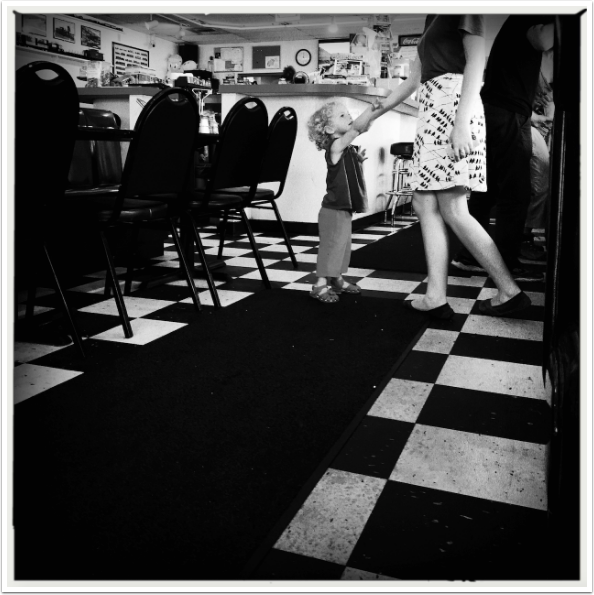
Where do you show your work? How has social media played a role in your photography? Which platforms are you most active on?
I show my work through social media frequently as the connection between mobile photography and social media networking is an important one. I share through facebook and several other platforms. I love flickr and post many images there the ability to join groups within the site is helpful in understanding my own work and that of my contemporaries. On my iPhone, I also use Oggl, Instagram and Tumblr. I now have a Lens Culture page for sharing projects and a Your Shot site through National Geographic. I particularly enjoy entering mobile photography contests not sure exactly why because I’m generally not a competitive person. Part of it is seeing what people consider the best of their own work. We tend to enter what we feel is most valuable from our personal perspective. It’s fun to sort that out for myself, and interesting to see what other photographers I admire have chosen. Contests are also a way to learn about who else is out there in the mobile photography world and what they’re creating right now. It moves fast!
‘Coffee Shop Beauty’ – ©Cindy Buske
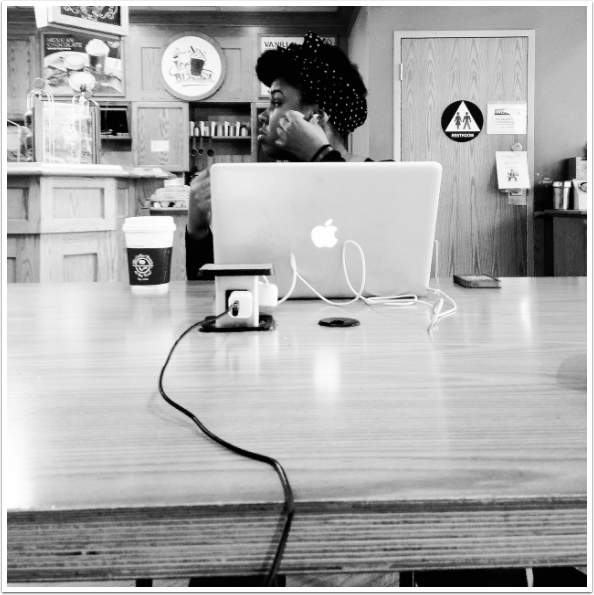
Do you have any tips that you would like to share with us? Is there anything else you would like to add?
Simply follow what moves you. What strikes your eye is unique from what appeals to the next photographer. Find inspiration in the work of others, but not so much that you’re imitating what they do. One of the things I like most about mobile photography is that it levels the playing field. By this I mean that sometimes the intimidating technical aspects of traditional photography are a bit more relaxed with a camera phone. Yes, mobile photo editing and artwork can certainly be technical, but simply shooting with a mobile phone is an option for most anyone. That ubiquitous nature lends itself to bringing out the artist in all of us, if we choose to tap into it. If everyone can manage the technology, then the eye is what remains as the focus of our work. How beautiful is that?
‘Remotely Together’ – ©Cindy Buske
